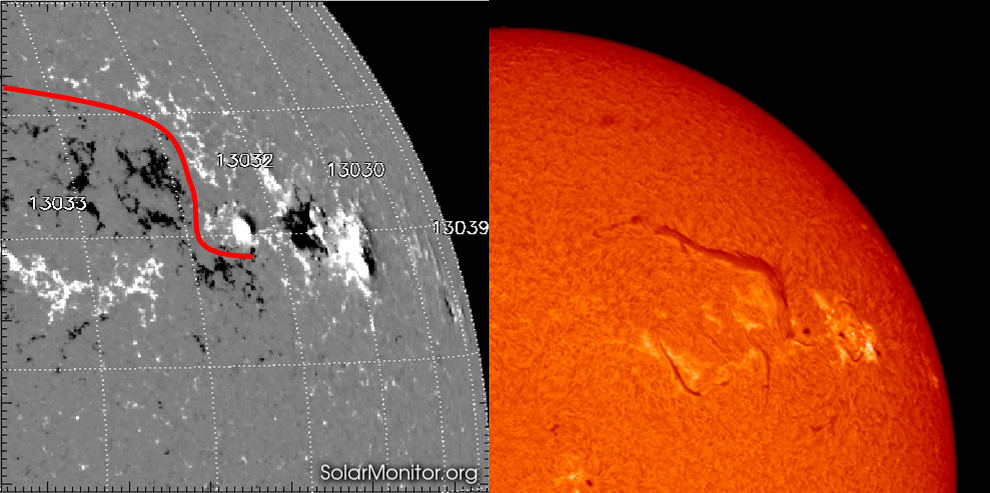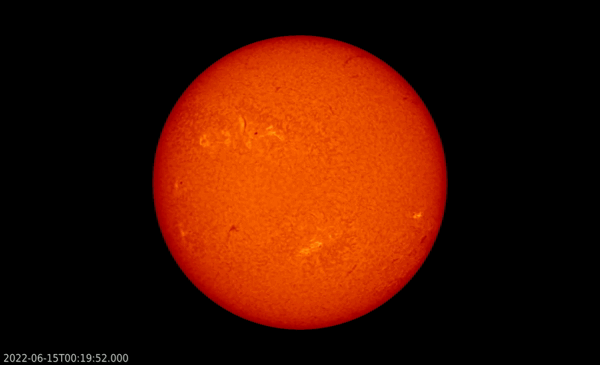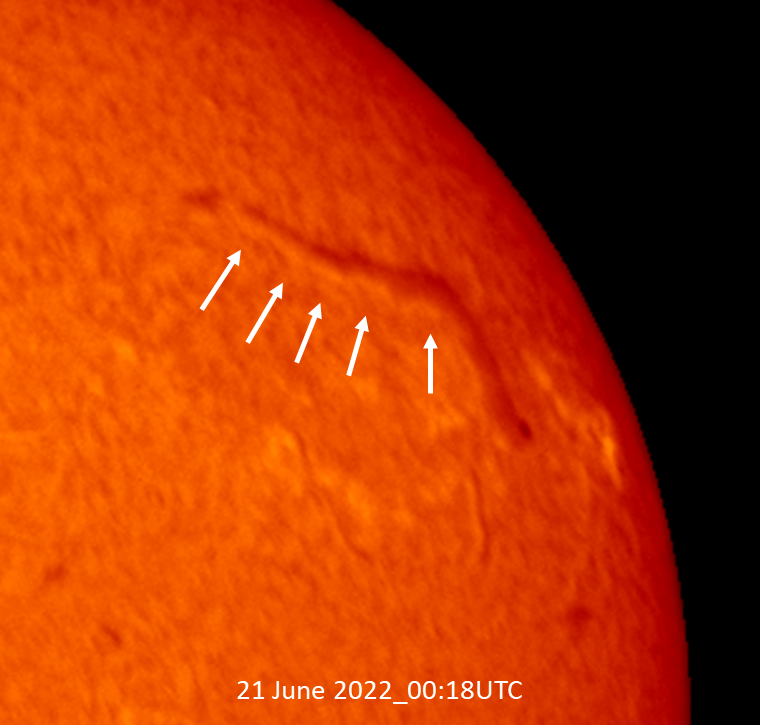Solar filaments are clouds of charged particles ("plasma") above the solar surface squeezed between magnetic regions of opposite polarity. Being cooler and denser than the plasma underneath and their surroundings, they appear as dark lines when seen on the solar disk and as bright blobs when seen near the solar limb (then they are called "prominences"). Special filters are required to observe these features, and one such a filter is the Hydrogen-alpha (H-alpha) line in the red part of the solar spectrum at 656.3nm.

From 15 June onwards, a filament started to develop in the trailing portion of the sunspot complex that has been determining solar activity since mid-April. Starting south of NOAA 13032's main spot, it stretched itself all the way up into the northeastern direction. The image above to the right shows the filament late on 19 June in H-alpha (a colorized image from the GONG network), while the annotated magnetogram (SDO/HMI) on the left proxies the location of the filament as it meanders through the areas of opposite polarity. White represents positive magnetic polarity (magnetic field (MF) lines coming out of the Sun), black represents negative polarity (MF lines returning to the Sun). The H-alpha images below show the evolution of the filament on 16, 18, 20 and 22 June.


The filament's length quickly grew from a few degrees on 15 June to over 30 degrees by 20 June, corresponding to a length of nearly 400.000 km which is the equivalent of the average Earth-Moon distance (384.400 km). The bright rim that can be seen at the base of the filament (annotated image below) is genuine and not an instrumental effect (Heinzel et al. 1995). Bright rims are known for over 100 years now and are an integral part of the filament. They are most likely due to radiation diffusion inside the filament as it is irradiated from below. The resulting contrast has a close analogy in the Earth's atmosphere, when clouds observed at sunrise or sunset and irradiated from one side have a much higher brightness on that side compared to the other side. The intensity of the rim's brightness depends on various factors such as the orientation in the filament, the mass of the filament, its location on the solar disk, the height above the solar surface, and the presence of nearby features such as plages. This also explains why a large number of filaments do not show a bright rim.

Long filaments are known to eventually erupt, as the surrounding magnetic fields usually become unstable at some point. In this case, the filament rounded the northwest solar limb uneventfully. The imagery below is a combination of a PROBA2/SWAP image showing the Sun at temperatures near 1 million degrees (extreme ultraviolet) overlaid on an H-alpha image. As the filament is much denser and has a much lower temperature (about 10.000 degrees) than the corona, it shows as a dark "wall" at the northwest limb in this composite. The height of the filament was about 35.000 km, similar to the circumference of the Earth. These quiescent filaments may live a long time, and so we may see it again within 2 weeks when it will have finished its farside transit.






